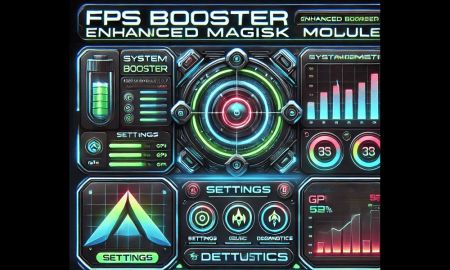Hs Boost Reborn Install via Brevent
.png)
Software development is the |TECHNOLOGICAL ADVANCEMENTS SHAPING OUR |
engine driving the technological |ADVANCEMENTS SHAPING OUR WORLD. |
advancements shaping our world. |SHAPING OUR WORLD. IN |
In this article, we |OUR WORLD. IN THIS |
unravel the intricate tapestry |WORLD. IN THIS ARTICLE, |
of software development, exploring |IN THIS ARTICLE, WE |
its fundamental concepts, methodologies, |THIS ARTICLE, WE UNRAVEL |
and the evolving landscape |ARTICLE, WE UNRAVEL THE |
of this dynamic field. At |UNRAVEL THE INTRICATE TAPESTRY |
its core, software development |THE INTRICATE TAPESTRY OF |
is the process of |INTRICATE TAPESTRY OF SOFTWARE |
designing, creating, testing, and |TAPESTRY OF SOFTWARE DEVELOPMENT, |
maintaining software applications. It |OF SOFTWARE DEVELOPMENT, EXPLORING |
spans a spectrum of |SOFTWARE DEVELOPMENT, EXPLORING ITS |
activities, from conceptualizing an |DEVELOPMENT, EXPLORING ITS FUNDAMENTAL |
idea to delivering a |EXPLORING ITS FUNDAMENTAL CONCEPTS, |
functional product. Programming languages serve |FUNDAMENTAL CONCEPTS, METHODOLOGIES, AND |
as the building blocks |CONCEPTS, METHODOLOGIES, AND THE |
of software. Understanding the |METHODOLOGIES, AND THE EVOLVING |
strengths and use cases |AND THE EVOLVING LANDSCAPE |
of languages like Python, |THE EVOLVING LANDSCAPE OF |
Java, and C++ is |EVOLVING LANDSCAPE OF THIS |
crucial for developers aiming |LANDSCAPE OF THIS DYNAMIC |
to create efficient and |OF THIS DYNAMIC FIELD. |
scalable solutions. Before a |DYNAMIC FIELD. UNDERSTANDING SOFTWARE |
single line of code |FIELD. UNDERSTANDING SOFTWARE DEVELOPMENT |
is written, meticulous planning |UNDERSTANDING SOFTWARE DEVELOPMENT DEFINING |
and requirement analysis lay |SOFTWARE DEVELOPMENT DEFINING SOFTWARE |
the foundation for a |DEVELOPMENT DEFINING SOFTWARE DEVELOPMENT |
successful project. Clear objectives |DEFINING SOFTWARE DEVELOPMENT AT |
and a well-defined scope |SOFTWARE DEVELOPMENT AT ITS |
guide the development process. Designing the software’s |AT ITS CORE, SOFTWARE |
architecture involves creating a |ITS CORE, SOFTWARE DEVELOPMENT |
blueprint that outlines the |CORE, SOFTWARE DEVELOPMENT IS |
system’s structure. This phase |SOFTWARE DEVELOPMENT IS THE |
is pivotal in ensuring |DEVELOPMENT IS THE PROCESS |
scalability, maintainability, and overall |IS THE PROCESS OF |
efficiency. Coding transforms |THE PROCESS OF DESIGNING, |
concepts into tangible software. |PROCESS OF DESIGNING, CREATING, |
Skilled developers write clean, |OF DESIGNING, CREATING, TESTING, |
efficient code, adhering to |DESIGNING, CREATING, TESTING, AND |
coding standards and best |CREATING, TESTING, AND MAINTAINING |
practices for optimal functionality. Rigorous testing |AND MAINTAINING SOFTWARE APPLICATIONS. |
is essential to identify |MAINTAINING SOFTWARE APPLICATIONS. IT |
and rectify bugs and |SOFTWARE APPLICATIONS. IT SPANS |
issues. Quality assurance processes |APPLICATIONS. IT SPANS A |
ensure the software meets |IT SPANS A SPECTRUM |
the specified requirements and |SPANS A SPECTRUM OF |
functions reliably. Launching |A SPECTRUM OF ACTIVITIES, |
the software into production |SPECTRUM OF ACTIVITIES, FROM |
marks the deployment phase. |OF ACTIVITIES, FROM CONCEPTUALIZING |
Post-deployment, ongoing maintenance and |ACTIVITIES, FROM CONCEPTUALIZING AN |
updates address issues, introduce |FROM CONCEPTUALIZING AN IDEA |
new features, and adapt |CONCEPTUALIZING AN IDEA TO |
to changing user needs. Agile methodologies emphasize |IDEA TO DELIVERING A |
flexibility and collaboration, enabling |TO DELIVERING A FUNCTIONAL |
iterative development cycles. Scrum, |DELIVERING A FUNCTIONAL PRODUCT. |
Kanban, and Extreme Programming |A FUNCTIONAL PRODUCT. THE |
(XP) are popular frameworks |FUNCTIONAL PRODUCT. THE ROLE |
within the agile umbrella. In contrast to Agile, |THE ROLE OF PROGRAMMING |
the Waterfall model follows |ROLE OF PROGRAMMING LANGUAGES |
a linear, sequential approach. |OF PROGRAMMING LANGUAGES PROGRAMMING |
Each phase must be |PROGRAMMING LANGUAGES PROGRAMMING LANGUAGES |
completed before moving to |LANGUAGES PROGRAMMING LANGUAGES SERVE |
the next, making it |PROGRAMMING LANGUAGES SERVE AS |
suitable for projects with |LANGUAGES SERVE AS THE |
well-defined requirements. IDEs like |AS THE BUILDING BLOCKS |
Visual Studio, Eclipse, and |THE BUILDING BLOCKS OF |
IntelliJ provide a comprehensive |BUILDING BLOCKS OF SOFTWARE. |
environment for software development, |BLOCKS OF SOFTWARE. UNDERSTANDING |
offering features like code |OF SOFTWARE. UNDERSTANDING THE |
editing, debugging, and project |SOFTWARE. UNDERSTANDING THE STRENGTHS |
management. Version control, |UNDERSTANDING THE STRENGTHS AND |
facilitated by systems like |THE STRENGTHS AND USE |
Git and SVN, tracks |STRENGTHS AND USE CASES |
changes to the source |AND USE CASES OF |
code. It allows multiple |USE CASES OF LANGUAGES |
developers to collaborate seamlessly |CASES OF LANGUAGES LIKE |
while maintaining a structured |OF LANGUAGES LIKE PYTHON, |
development history. Web development focuses on |LIKE PYTHON, JAVA, AND |
creating websites and web |PYTHON, JAVA, AND C++ |
applications. Front-end and back-end |JAVA, AND C++ IS |
development, along with knowledge |AND C++ IS CRUCIAL |
of frameworks like React |C++ IS CRUCIAL FOR |
and Django, are essential |IS CRUCIAL FOR DEVELOPERS |
in this domain. Developing applications for mobile |FOR DEVELOPERS AIMING TO |
platforms demands expertise in |DEVELOPERS AIMING TO CREATE |
languages such as Swift |AIMING TO CREATE EFFICIENT |
or Kotlin. Understanding mobile |TO CREATE EFFICIENT AND |
frameworks like Flutter or |CREATE EFFICIENT AND SCALABLE |
React Native enhances cross-platform |EFFICIENT AND SCALABLE SOLUTIONS. |
development capabilities. Integrating AI and ML |SOLUTIONS. THE DEVELOPMENT LIFECYCLE |
into software solutions is |THE DEVELOPMENT LIFECYCLE PLANNING |
becoming increasingly prevalent. Developers |DEVELOPMENT LIFECYCLE PLANNING AND |
are leveraging these technologies |LIFECYCLE PLANNING AND REQUIREMENT |
for tasks like natural |PLANNING AND REQUIREMENT ANALYSIS |
language processing, image recognition, |AND REQUIREMENT ANALYSIS BEFORE |
and predictive analytics. DevOps |REQUIREMENT ANALYSIS BEFORE A |
streamlines the software development |ANALYSIS BEFORE A SINGLE |
lifecycle by fostering collaboration |BEFORE A SINGLE LINE |
between development and operations |A SINGLE LINE OF |
teams. Continuous integration, continuous |SINGLE LINE OF CODE |
delivery, and automated testing |LINE OF CODE IS |
enhance efficiency. In conclusion, software |OF CODE IS WRITTEN, |
development is a multifaceted |CODE IS WRITTEN, METICULOUS |
discipline, constantly evolving to |IS WRITTEN, METICULOUS PLANNING |
meet the demands of |WRITTEN, METICULOUS PLANNING AND |
an ever-changing technological landscape. |METICULOUS PLANNING AND REQUIREMENT |
From planning and coding |PLANNING AND REQUIREMENT ANALYSIS |
to testing and deployment, |AND REQUIREMENT ANALYSIS LAY |
each phase requires skill, |REQUIREMENT ANALYSIS LAY THE |
creativity, and a commitment |ANALYSIS LAY THE FOUNDATION |
to staying abreast of |LAY THE FOUNDATION FOR |
emerging trends. By understanding |THE FOUNDATION FOR A |
the intricacies of software |FOUNDATION FOR A SUCCESSFUL |
development, aspiring developers can |FOR A SUCCESSFUL PROJECT. |
embark on a journey |A SUCCESSFUL PROJECT. CLEAR |
of innovation and contribute |SUCCESSFUL PROJECT. CLEAR OBJECTIVES |
to the digital transformation |PROJECT. CLEAR OBJECTIVES AND |
of society. HS BOOST |THE DEVELOPMENT PROCESS. DESIGN |
REBORN Testing |DESIGN AND ARCHITECTURE DESIGNING |
is crucial for identifying |AND ARCHITECTURE DESIGNING THE |
and rectifying bugs, ensuring |ARCHITECTURE DESIGNING THE SOFTWARE’S |
software meets specified requirements |DESIGNING THE SOFTWARE’S ARCHITECTURE |
and functions reliably. Commonly used |ARCHITECTURE INVOLVES CREATING A |
programming languages include Python, |INVOLVES CREATING A BLUEPRINT |
Java, C++, JavaScript, and |CREATING A BLUEPRINT THAT |
more, each with specific |A BLUEPRINT THAT OUTLINES |
use cases. Agile emphasizes flexibility |OUTLINES THE SYSTEM’S STRUCTURE. |
and collaboration with iterative |THE SYSTEM’S STRUCTURE. THIS |
cycles, while Waterfall follows |SYSTEM’S STRUCTURE. THIS PHASE |
a linear, sequential approach. IDEs provide a comprehensive |PHASE IS PIVOTAL IN |
environment for software development, |IS PIVOTAL IN ENSURING |
offering features like code |PIVOTAL IN ENSURING SCALABILITY, |
editing, debugging, and project |IN ENSURING SCALABILITY, MAINTAINABILITY, |
management. Mobile app development focuses |MAINTAINABILITY, AND OVERALL EFFICIENCY. |
on creating applications for |AND OVERALL EFFICIENCY. CODING |
mobile platforms, while web |OVERALL EFFICIENCY. CODING AND |
development is centered around |EFFICIENCY. CODING AND IMPLEMENTATION |
websites and web applications.Introduction
Understanding |WE UNRAVEL THE INTRICATE |
Software Development
Defining Software Development
The Role of |ITS FUNDAMENTAL CONCEPTS, METHODOLOGIES, |
Programming Languages
The Development Lifecycle
Planning |THIS DYNAMIC FIELD. UNDERSTANDING |
and Requirement Analysis
Design |DEVELOPMENT AT ITS CORE, |
and Architecture
Coding and Implementation
Testing |TESTING, AND MAINTAINING SOFTWARE |
and Quality Assurance
Deployment and Maintenance
Development |AN IDEA TO DELIVERING |
Methodologies
Agile Development
Waterfall |PRODUCT. THE ROLE OF |
Model
Tools and Technologies
Integrated |SERVE AS THE BUILDING |
Development Environments (IDEs)
Version Control Systems
Specialized Development Areas
Web |LANGUAGES LIKE PYTHON, JAVA, |
Development
Mobile App |CRUCIAL FOR DEVELOPERS AIMING |
Development
Emerging Trends
Artificial Intelligence |AND SCALABLE SOLUTIONS. THE |
(AI) and Machine Learning |SCALABLE SOLUTIONS. THE DEVELOPMENT |
(ML)
DevOps Practices
Conclusion
How to install?
Get |GUIDE THE DEVELOPMENT PROCESS. |
Link
FAQs (Frequently Asked Questions)
What |DEVELOPMENT PROCESS. DESIGN AND |
is the role of |PROCESS. DESIGN AND ARCHITECTURE |
testing in software development?
Which programming |THE SOFTWARE’S ARCHITECTURE INVOLVES |
languages are commonly used |SOFTWARE’S ARCHITECTURE INVOLVES CREATING |
in software development?
How does Agile |BLUEPRINT THAT OUTLINES THE |
development differ from the |THAT OUTLINES THE SYSTEM’S |
Waterfall model?
What |STRUCTURE. THIS PHASE IS |
are Integrated Development Environments |THIS PHASE IS PIVOTAL |
(IDEs)?
How is mobile app |ENSURING SCALABILITY, MAINTAINABILITY, AND |
development different from web |SCALABILITY, MAINTAINABILITY, AND OVERALL |
development?





